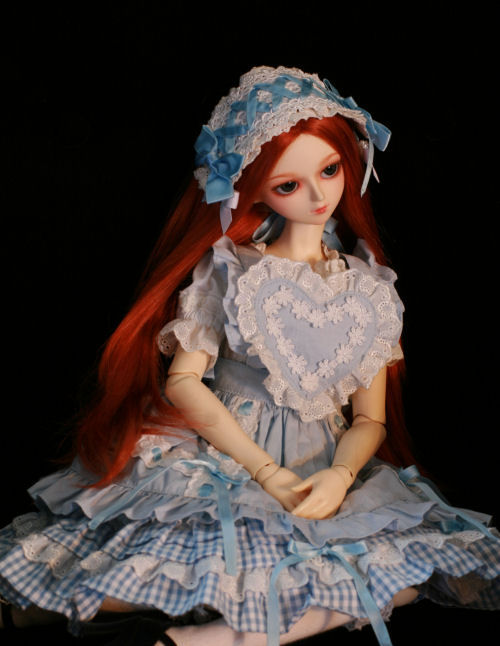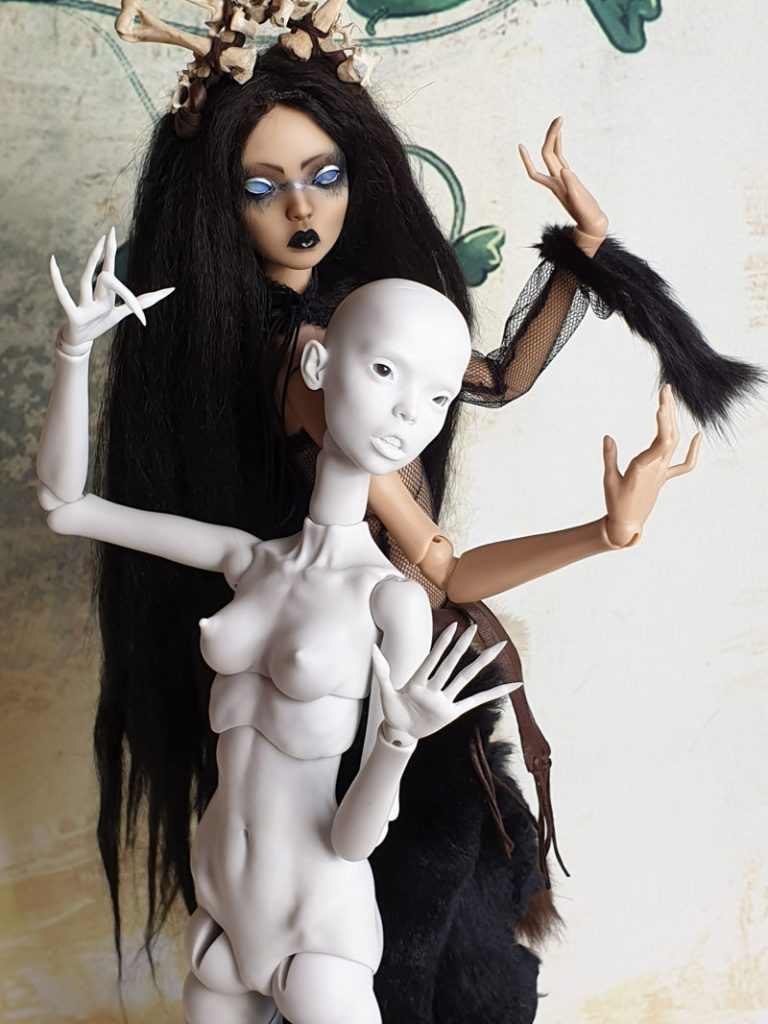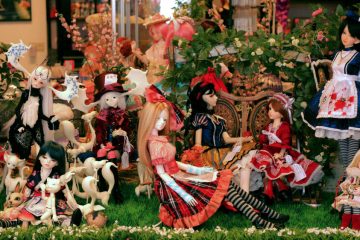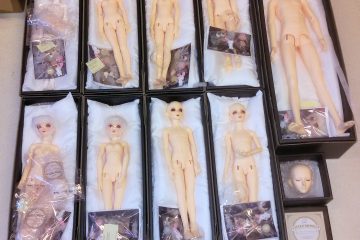About BJD
BJD aesthetic
A Ball Jointed Doll (BJD for short) is a doll with spherical (ball) joints. Because of these, the doll is able to mimic real-life poses. Since the first inception of modern BJD’s, their aesthetic has changed significantly when compared to the early dolls released by Volks. However, there is a little more to the definition of BJD as collectors use it nowadays, they are – to the collector community – not the same as the antique bisque dolls or Hans Bellmer art dolls with ball joints. Nor are they the same as action figures with similarly looking round joints.

SD13 Nana in Baby, The Stars Shine Bright 
Marzanna and Zíma
Early and modern BJD’s
This doll for instance (Volks SD13 Nana), is one of these early BJD’s. As you can see, her joints are fairly simple and her body does not have a lot of detail. Additionally, most of the early dolls had a rather anime appearance, combined with a sense of realism.
The first ever Volks Super Dollfie (SD for short, a 1/3 size 56cm tall doll) was designed in 1999 by the sculptor Akihiro Enku. This represents the start of modern era ABJD’s (Asian ball jointed dolls).
Modern day BJD’s are acknowledged as such when they meet certain criteria. The strict definition however is getting harder to pinpoint as more doll makers enter the market with their own unique approach to it.
Some of these criteria are:
- The doll has ball joints. They could also have double-ball joints or more of an oblong shaped joint for instance.
- The doll is made of (poly)urethane resin. Commonly used materials could also be French / environmental resin, vinyl, clay or porcelain.
- The doll has eyes that can be inset, but dolls with painted-on eyed also exist in abundance
- The doll is strung with tension (for instance with elastic cord).
- Asian BJD’s (ABJD) are of course made in Asia, but BJD’s in general are made worldwide nowadays. Ever more artists are starting to create pose-able art dolls.
So, what differentiates a BJD from other dolls?
That is a question that is getting harder to answer as time passes. Fashion dolls for instance used to be considered to be completely different from BJD’s at first, but in recent years BJD’s have started to become more proportioned and stylized in the classic fashion-doll way (such as the Popovy Sisters‘ dolls as pictured above for instance).
Action figures and BJD’s are not entirely dissimilar anymore either, as dolls are now available in classic action figure scale and some even have the aesthetic, not to mention that both are pose-able.
Finally, BJD’s are also available as babies, so to the novice fan there would seem to be no difference between BJD’s and baby dolls.
However, BJD’s come in a wide range of ages – from infant to elderly – and skin colors – ranging from snow white, normal, tan, ebony to blue, purple, green and midnight black for instance – to represent almost every ethnic group and fantasy creature imaginable.
BJD’s and creativity
BJD’s are highly customizable , but if you’re not creative, you don’t have to customize them. On the other hand: artistic people can customize almost anything, really. Creativity is not a prerequisite for collecting ball jointed dolls.
Some examples of the creative possibilities of BJD’s are:
- sculpting – make your own doll out of clay, paper maché, precious metals, porcelain, so many options!
- modding – subtract or add to a base doll to create your own version of it
- painting – give your doll make-up, a facial expression, tattoos, freckles… whatever you can imagine! Use acrylic paint, watercolor pencils or paint or soft pastels to personalize your doll.
- sewing – create your own doll clothes, accessories and maybe even shoes!
- diorama making – make a scene, room or even a house for your doll.
- prop making – craft your own accessories and props for your doll characters.
- photography – take stunning pictures in carefully thought-out photo shoots, or share quick snaps with fellow collectors for fun!
- writing – write standalone stories or role play with your dolls’ characters in online communities with other collectors.
- drawing – draw or paint your dolls or doll characters in traditional or virtual media.
Is my Monster High a BJD?
Strictly speaking, no. This is not elitist and BJD fans in general don’t look down on them. They simply do not meet the requirement of ball-and-socket joints. On the other hand, many BJD fans do appreciate and even collect Monster High dolls.
Dollfie Dream, Obitsu and other dolls with a plastic skeleton and soft vinyl body aren’t BJD’s either. Despite their round joints , they are again not ball-in-socket.
For more information about BJD’s, visit Wikipedia
What important information about BJD’s would you share with beginners in the hobby? As a collector, which questions do you have about BJD’s? Share your comments below!



0 Comments